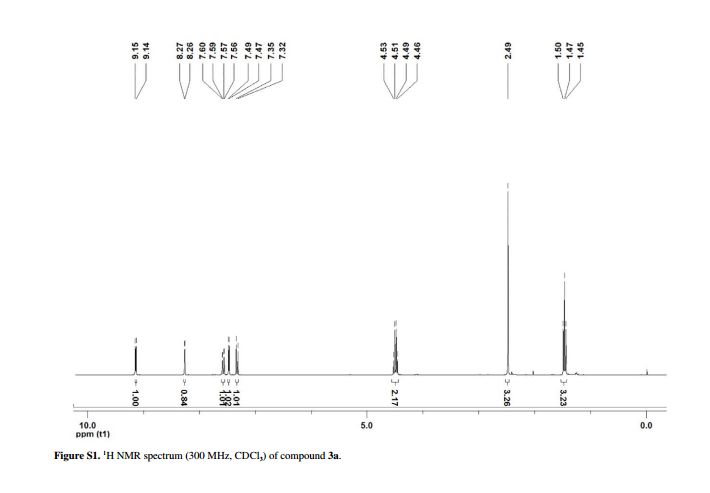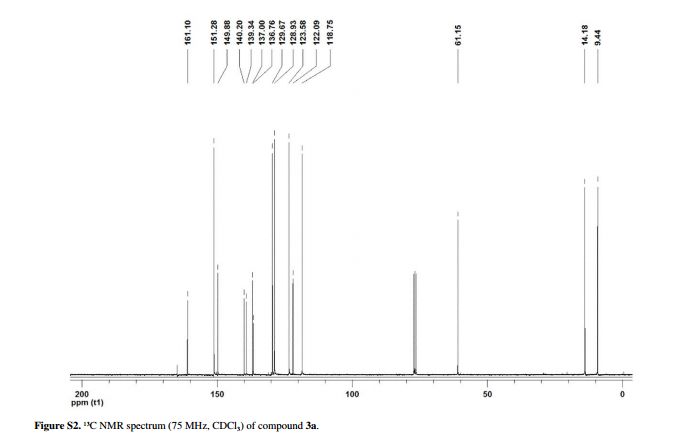Scheme 1 General scheme of the reaction.
Scheme 2
General procedure for the synthesis of 7-chloroquinoline-1,2,3-triazoyl carboxylates
To a solution of 4-azido-7-chloroquinoline 1 (0.3 mmol, 0.061 g) in DMSO (0.3 mL), was firstly added the β-ketoesters 2a-k (0.3 mmol) and then the catalyst pyrrolidine (0.03 mmol. 0.021 g). The reaction mixture was stirred in an open vial at room temperature for 24 hours. After completion of the reaction, the crude product was purified by column chromatography on silica gel using a mixture of hexanes/ethyl acetate (5:1) as the eluent to afford the desired products 3a-k.
Ethyl 1-(7-chloroquinolin-4-yl)-5-methyl-1H-1,2,3-triazole-4-carboxylate (3a)
Yield: 0.085 g (90%); white solid; mp 128-130 °C;
1H NMR (CDCl3, 300 MHz) δ 9.15 (d, 1H, J4.5 Hz, HetAr-H), 8.27 (d, 1H, J1.9 Hz, HetAr-H), 7.60 (dd, 1H, J9.0 and 1.9 Hz, HetAr-H), 7.48 (d, 1H, J4.5 Hz, HetAr-H), 7.34 (d, 1H, J9.0 Hz, HetAr-H), 4.50 (qua, 2H, J7.1 Hz, OCH2), 2.49 (s, 3H, CH3), 1.47 (t, 3H, J7.1 Hz, CH3);
13C NMR (CDCl3, 75 MHz) δ 161.10, 151.28, 149.88, 140.20, 139.34, 137.00, 136.76, 129.67, 128.93, 123.58, 122.09, 118.75, 61.15, 14.18, 9.44;
MS m/z (relative intensity): 316 (7), 259 (15), 243 (17), 231 (19), 217 (45), 215 (100), 214 (22), 205 (16), 203 (19), 189 (28), 181 (27), 179 (27), 164 (26), 162 (80), 137 (15), 135 (44), 127 (44), 126 (27), 100 (20), 99 (65), 83 (30), 75 (15), 74 (14), 43 (25);
HRMS calcd. for C15H14ClN4O2 [M + H]+: 317.0805; found: 317.0788.
Journal of the Brazilian Chemical Society
On-line version ISSN 1678-4790
J. Braz. Chem. Soc. vol.27 no.1 São Paulo Jan. 2016
http://dx.doi.org/10.5935/0103-5053.20150239
ARTICLES
7-Chloroquinoline-1,2,3-triazoyl Carboxylates: Organocatalytic Synthesis and Antioxidant Properties
aLaboratório de Síntese Orgânica Limpa (LASOL, CCQFA), Universidade Federal de Pelotas (UFPel), CP 354, 96010-900 Pelotas-RS, Brazil
bGrupo de Pesquisa em Neurobiotecnologia (GPN), CDTec/CCQFA, Universidade Federal de Pelotas (UFPel), CP 354, 96010-900 Pelotas-RS, Brazil
ABSTRACT
We describe herein our results on the synthesis and antioxidant properties of 7-chloroquinoline-1,2,3-triazoyl-4-carboxylates. This class of compounds have been synthesized in moderated to excellent yields by the reaction of 4-azido-7-chloroquinoline with a range of β-ketoesters in the presence of a catalytic amount of pyrrolidine (10 mol%). The synthesized compounds ethyl 1-(7-chloroquinolin-4-yl)-5-methyl-1H-1,2,3-triazole-4-carboxylate and ethyl 1-(7-chloroquinolin-4-yl)-5-phenyl-1H-1,2,3-triazole-4-carboxylate were screened for their in vitro antioxidant activity and the results demonstrated that the first compound reduces the lipid peroxidation levels induced by sodium nitroprusside in liver of mice, while the second compound shown nitric oxide scavenging activity. This is an efficient method to produce new heterocyclic compounds with potential antioxidant activities.
Figure 1 Biologically important quinolines.
Key words: quinolines, 1,2,3-triazoles, organocatalysis, cycloaddition, antioxidant
/////////////


















Sorry, the comment form is closed at this time.